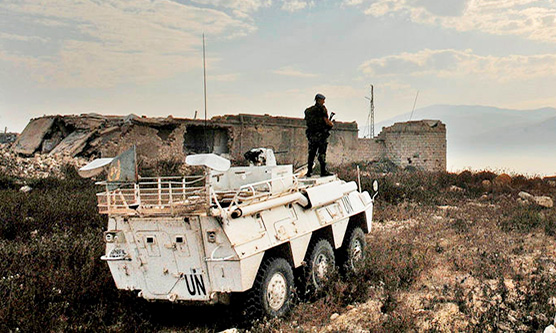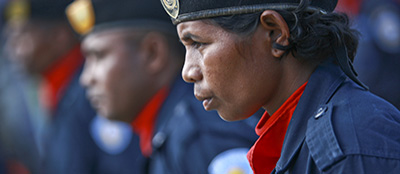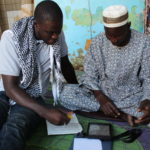This review of existing literature indicates that there are a number of significant implications of not addressing mental health and psychosocial (MHPSS) needs of children, youth, and adults in conflict settings. Mental health consequences of war are by now fairly well documented (see for example Murthy and Lakshminarayana, 2006; Werner, 2012; Betancourt et al., 2014; ...» more
Conflict
Current Trends in Violent Conflict
This rapid literature review presents the key literature that discusses current trends in violent conflict. The focus is upon recent ideas that are prevalent in literature from post-2015. The literature review draws on both academic and grey literature. The review includes both quantitative analyses of conflict data sets (Szayna et al, 2017a; 2017b; Watts, 2017) and qualitative ...» more
Doing research in fragile contexts
Research is critical to understanding and addressing the problems seen in fragile and conflict affected states (FCAS). The scale and impact of these problems is staggering: in 2016 about 1.8 billion people were living in fragile contexts but this is predicted to grow to 2.3 billion (28% of total world population) by 2030; poverty is also increasingly concentrated in fragile ...» more
National Dialogues: Lessons Learned and Success Factors
National dialogues are: “nationally-owned political processes aimed at generating consensus among a broad range of national stakeholders in times of deep political crisis, in post-war situations or during far-reaching political transitions” (Blunck et al., 2017, 21). They are typically accompanied by broader societal consultations, involving all sectors of society. Their ...» more
Livestock and Conflict in South Sudan
Livestock are critically important in South Sudanese society1 and this is reflected in the role livestock play in the country’s conflict, both serving as drivers of conflict and being negatively impacted by the conflict, with the two often reinforcing each other in a vicious cycle. This review drew largely on a mixture of academic and grey literature to assess the ...» more
Youth vulnerability to violent extremist groups in the Indo-Pacific
This review of factors driving youth vulnerability to recruitment by violent extremist groups in the Indo-Pacific highlights the variety of factors involved, and the importance of looking at each situation individually. It is impossible to generalize: youth recruitment is context-specific. In Bangladesh the political situation has created space for violent groups, with youth ...» more
Refugees in Uganda: (in)stability, conflict, and resilience
This paper analyses the structural challenges, root causes and dynamics of conflict, (in)stability and resilience in Uganda, with a particular focus on their relation to recent refugee movements. The first section of the paper explores the national dynamics that shape conflict, (in)stability and resilience in Uganda. The second section analyses the refugee flows, policies, ...» more
Effects of Violence in the Home on Children’s Mental Health and Psychosocial Wellbeing During Conflict
Being exposed to violence in the home during war increases children’s risk of developing problems in mental health and psychosocial wellbeing (MHPSW), a small but robust evidence base shows. Conversely, this evidence shows that supportive parenting can be a protective factor against the demonstrated negative effects of war on children’s MHPSW. Evidence from multiple sources ...» more
Conflict, instability and resilience in Nigeria
This paper analyses the structural challenges, root causes and dynamics of conflict, instability and resilience in Nigeria. The first half of the paper explores the overall socio-economic, socio-cultural, political and environmental factors that shape conflict, instability and resilience in Nigeria. The second half of the paper explores the specific regionalised conflicts in ...» more
Supporting and rebuilding agriculture in protracted crises
The agriculture sector holds great potential before, during and after crises such as conflict and disasters caused by natural hazards, to save lives and contribute to livelihoods, support rural households, and provide decent employment (Eynon, 2017, p. 2; Mayen, 2016, p. 2). This rapid review looks at recent available evidence on the impact of conflict, protracted crises, and ...» more
Women’s participation in peacebuilding and reconciliation in Iraq
This rapid review synthesises data from academic, policy and NGO sources on women’s participation in peacebuilding in Iraq. Peacebuilding will be defined as a ‘range of measures targeted to reduce the risk of lapsing or relapsing into conflict by strengthening national capacities at all levels for conflict management and to lay the foundation for sustainable peace and ...» more
Linkages between private sector development, conflict and peace
The private sector can both exacerbate drivers of conflict and contribute to peacebuilding in post-conflict states. Examples of the role that the private sector can play in conflict and peace at the macro, meso and micro levels include the following: Macro level There is a general consensus in the literature that illicit trade in natural resources can increase in the ...» more
Conflict-sensitive cash transfers: social cohesion
The literature suggests that the effects of social protection initiatives such as cash transfers and vouchers on social cohesion are positive, but there is very little empirical evidence to back this. This review found no research comparing cash transfers and vouchers from the perspective of social cohesion. Experience of cash transfers in developing countries, including ...» more
Drivers of conflict in Tunisia: An annotated bibliography
Tunisia has witnessed an increase in conflict activity in recent years, both in the form of violent political protest and acts of violence perpetrated by armed jihadist groups. This report identifies some of the key literature on drivers of conflict in Tunisia, looking at both short-term and structural factors. The literature included in this report identifies the following ...» more
Conflict-sensitive cash transfers: unintended negative consequences
Risks associated with cash transfer programmes in fragile contexts include theft, diversion, corruption, security, targeting, misuse by beneficiaries and inflationary effects. However, the literature indicates that – while different – these risks are no greater than those associated with other forms of aid, e.g. vouchers or in-kind goods, and could even be less. Cash transfer ...» more
Violent extremism and terrorism in Yemen
Al Qaeda in the Arabian Peninsula (AQAP) first gained control of territory in 2011 when it took advantage of political chaos; it once again managed to take control of territory following the current civil war, which began in early 2015. AQAP’s aim is to create a number of smaller emirates, which will eventually link to form a caliphate when they deem the time is right. AQAP ...» more
Stabilisation in Syria
The Syrian conflict is now in its seventh year and involves a wide range of both national and international parties. Crucially, no party is in a position to establish control over the entire country. This has implications for efforts at stabilisation. There is increasing recognition that the Assad regime cannot be displaced and hence efforts to find a political solution are ...» more
The impact of mines and explosive remnants of war on gender groups
Global and country-specific gender-disaggregated data on casualties is made available through the annual Landmine Monitor produced by the International Campaign to Ban Landmines – Cluster Munition Coalition (ICBL-CMC). However, there appears to be little in the way of granular analysis and research to interrogate the underlying reasons behind yearly fluctuations in casualty ...» more
Psycho-social support for children and school staff in protracted conflict situations
Whilst the provision of psychosocial activities is regularly mentioned in documents referring to the humanitarian response to education, there is a dearth of literature that refers to exactly what these programmes consist of, and how effective they are. There is, however, widespread recognition of the importance of providing psycho-social interventions to counter the impact of ...» more
Conflict analysis
Conflict analysis is a structured process of analysis to understand conflict. It focuses on the conflict profile (its history), the actors involved and their perspectives, the causes of conflict, and the dynamics of how these elements interact. This Topic Guide looks at how conflict analysis is done – at the systematic approaches and tools for conflict analysis developed for ...» more




